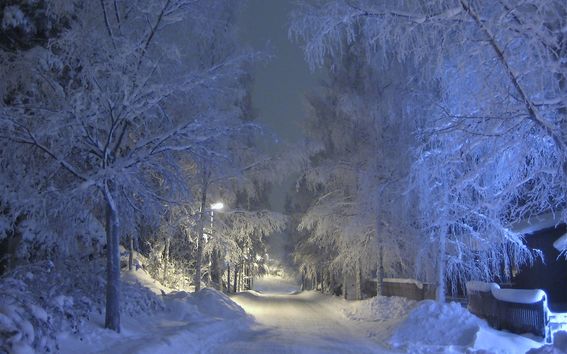The aurora borealis can be heard even when they can’t be seen
Recordings reveal sounds linked with geomagnetic activity that’s too weak to cause northern lights at the same spot

On the calm and clear night of January 16–17, in Fiskars village, Raasepori, Finland, temperatures plummeted to -25°C. With the Finnish Meteorological Institute forecasting calm magnetic field conditions and no aurora borealis, Professor Emeritus Unto K. Laine from Aalto University seized the opportunity to conduct acoustic and magnetic field measurements. His mission: to investigate the phenomenon of sounds caused by frost.
Throughout the ten-hour recording, approximately three hundred distinct sound events were captured, resembling the sounds of frost popping and snapping. Utilising a sophisticated equipment setup which simultaneously recorded six different channels — four from microphones and two related to the magnetic field parallel to the earth's surface — it became evident that all sounds originated from above the microphones, the sources varying in altitude within the open sky.
The surprising revelation emerged during the investigation of local magnetic field disturbances associated with the recorded sounds.
‘I was taken by surprise with what I found. It was hitherto thought that the pops and cracks were caused by trees or buildings. But the results clearly showed that they were caused by electrical discharges occurring in the lower atmosphere,’ says Professor Laine.
The directional consistency between the magnetic field pulses and the microphone array indicated the magneto-acoustic nature of the sound sources. Furthermore, the temporal shape of the magnetic field pulses strongly correlated with the corresponding sound pulses. This meant researchers could locate sound sources across distinct layers, ranging from around 80–200 m above ground level.
This groundbreaking research challenges previous notions around the origins of sounds associated with frost. Contrary to earlier claims attributing these sounds to ground-level phenomena, the majority of sounds resembling frost popping and snapping emanate from the sky. Moreover, their underlying mechanism mirrors that of sounds associated with the northern lights — both are products of electric discharge within temperature inversion layers.
The findings of this research will be presented at the Nordic BNAM2024 meeting of acousticians, scheduled to take place at Hanasaari, Espoo, Finland on May 22, 2024.
Link to the article: Magneto-acoustic triangulation method for electric discharge localization in the atmosphere.

Recordings reveal sounds linked with geomagnetic activity that’s too weak to cause northern lights at the same spot
A study that correlates the sound of the Northern Lights with the Schumann resonances
A mathematical model confirms the hypothesis of the origin of the auroral sounds.
Sounds are born when charges in the lower atmosphere’s temperature inversion layer discharge as a result of geomagnetic storms.



